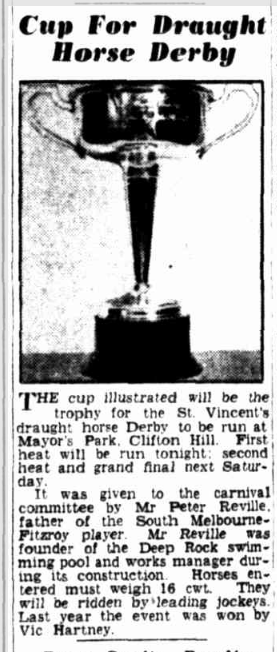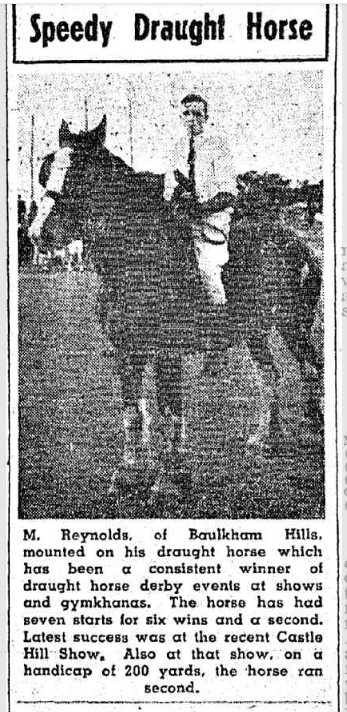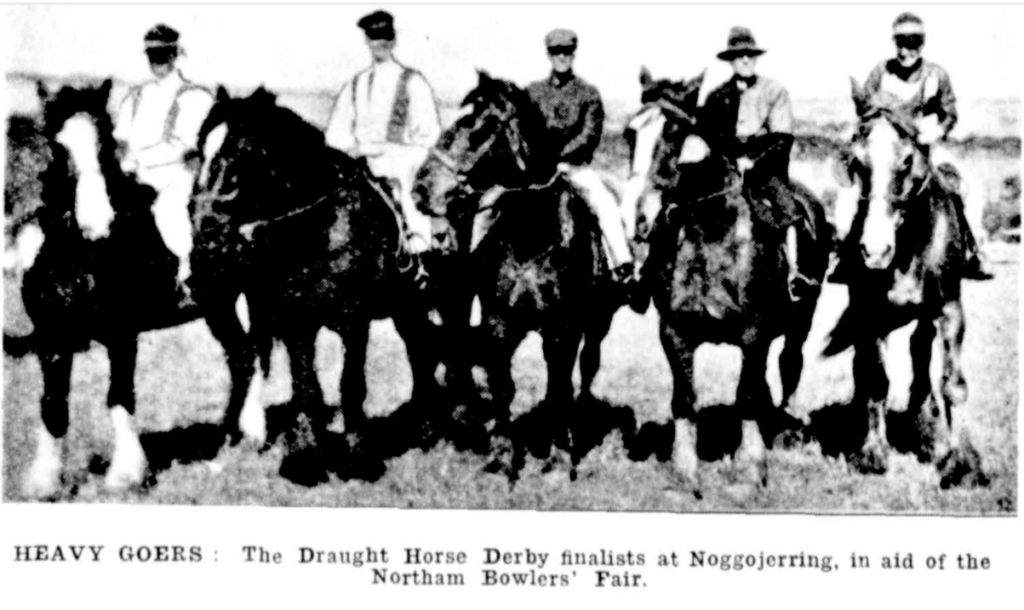Draught Horse Derby
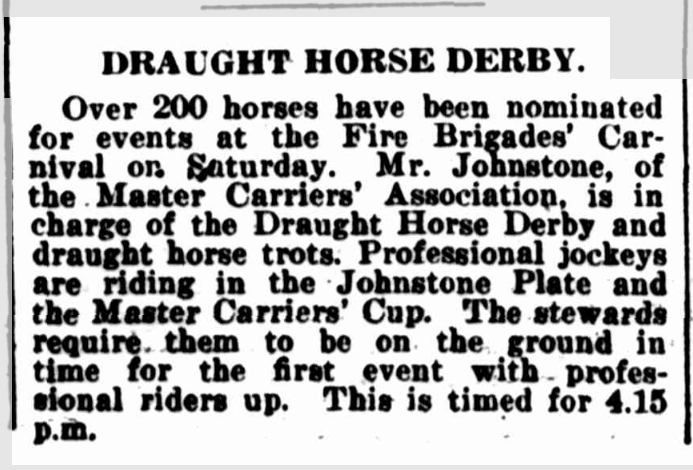
From Waler Data Base @ FaceBook. Image: Arrow (Sydney) 16th April 1926
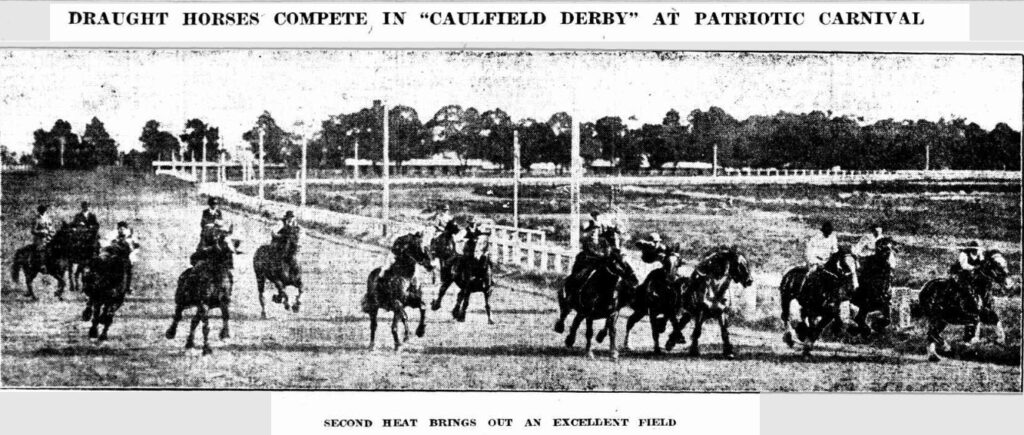
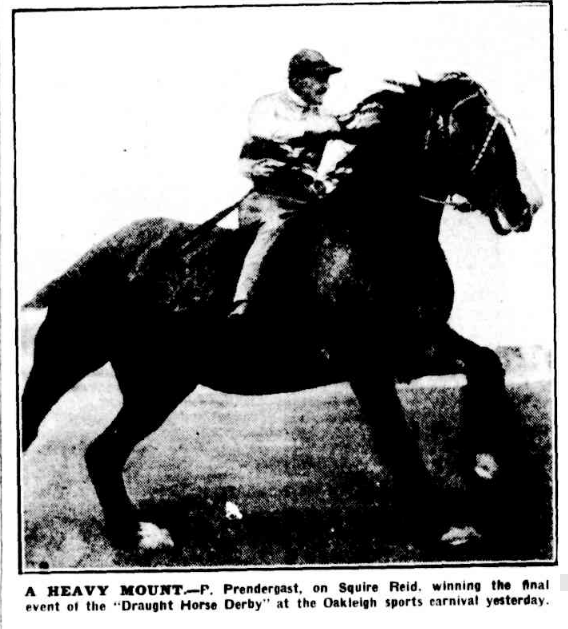
Draught Horse Derby… started during WW1 – held as part of Heroes Day events, raising funds for the families of men killed in the war and the Red Cross. The derby proved very popular and was taken up all over Australia.
Incredible amounts of money were raised. Professional jockeys were used at the inaugural event.
The horses were weighed for major derbies, so no light weights entered. Most seemed to be utility/gunner type, not full draught.
Sometimes they were held as a trotting race – ridden, not in harness; those which broke (galloped) were disqualified – Royal Adelaide Show usually had the Draught Horse Derby Trot around the trotting track that circled the arena. Sometimes every horse in the race broke!
Image: The Argus (Melbourne) 25th Sept 1931
The horses were trained beforehand and were fit from work anyway. Most of all, it was fun. The winners got a nice big cup and good prize money.
Sometimes there were heats to see which horses entered the final – as often there were over 200 entries. A handicapping system was used so the slower/heavier horses got a head start.
At some places such as Perth Show 1929, prominent citizens were hoisted aboard as jockeys, which created much hilarity. The commentators sometimes got so excited they forgot the names of the horses and called it all wrong, or made up names, which added to the fun. One yelled his wife’s name over and over as the horse she liked was winning! Elsie! Elsie! however was a gelding! At some places there was a Draught Horse Derby for all women riders, eg Maribyrnong in 1941 to raise Red Cross funds.
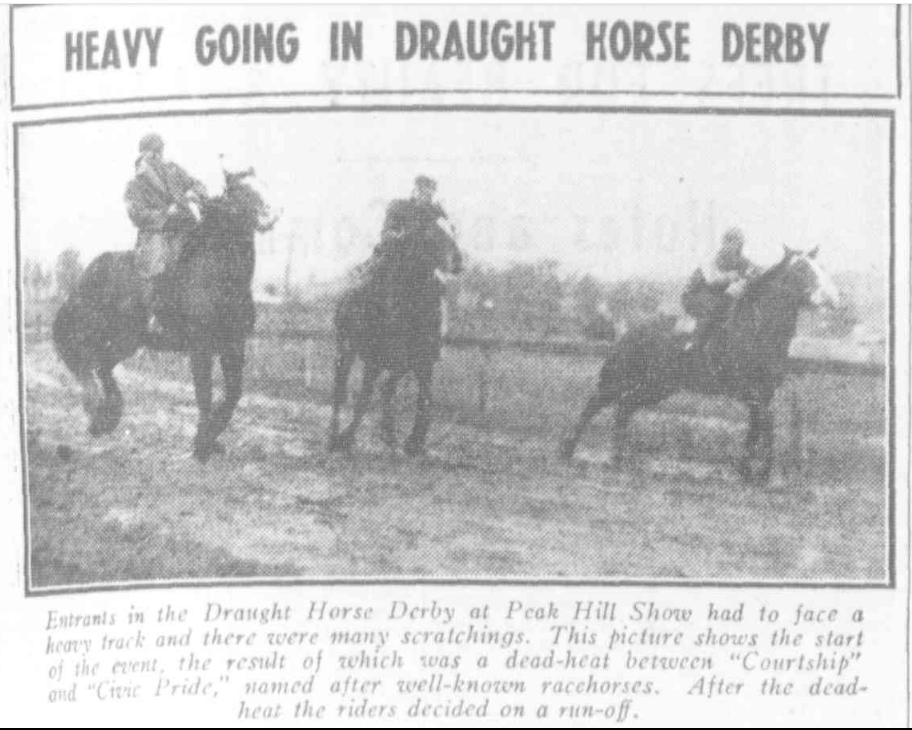
The tradition continued after the war, a Draught Horse Derby featuring at many shows through the 1920’s, ’30’s and ’40’s, usually ridden by their owners – sometimes saddled, sometimes bareback; rules depended on the particular event. Usually these derbies were fundraisers for local fire brigades and various charities. There were more formal Draught Horse Derbies with jockeys held after the war, again as entertainment and fundraisers. They were used again in WW2 for raising war funds.
